Dietary phosphorus requirement for olive flounder could be 0.43 percent
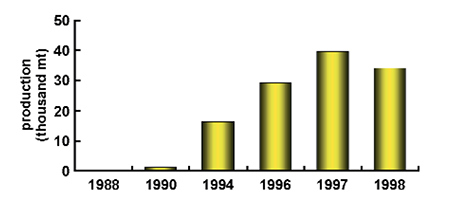
The aquaculture of olive flounder (Paralichthys olivaceus) has grown since 1990 to become a widely practiced activity in Korea. It is one of the most important commercial cultured fish species in the country, with 1998 production reaching 34,115 metric tons (MT) out of the approximately 100,000-MT total production for finfish mariculture in the country (Fig. 1).
Fish-based, moist-pellet diets are still common in the intensive-culture tank systems widely used to raise flounder (Fig. 2). These diets can cause problems in flounder culture, including diseases, water pollution, and high cost. In addition, coastal fisheries production – including non-food fish that are the main protein source in flounder feeds – has declined.
To deal effectively with this situation, formulated, commercial extruded-pellet diets are needed. Several experiments were carried out at Pukyong National University in Pusan, Korea to select feed ingredients with high phosphorus retention, and to propose the optimum dietary phosphorus level in olive flounder.
Phosphorus
As an essential macro-element, phosphorus is required for normal growth, reproduction, and health in fish. However, phosphorus released from uneaten feed and feces stimulates algal growth and eutrophication. For significant improvements in water quality of aquaculture effluents, dietary considerations such as phosphorus concentrations in feeds, ingredient availability and feeding practices must all be considered.
Fishmeal
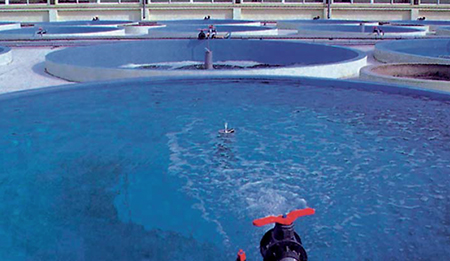
Fishmeal has traditionally been a major ingredient in fish diets because of its high protein quality and palatability. However, world fishmeal production is limited to about 6.5 million MT per year. As aquaculture development proceeds, and the demand for fishmeal increases, fishmeal prices are expected to increase.
Also, fishmeal used in fish feeds contains high levels (2.6 to 5.3 percent) of phosphorus, which can increase eutrophication in aquaculture systems and surrounding areas. Suitable alternative sources of protein must be found to reduce water quality problems and the cost of producing fish.
Strategies to reduce phosphorus output from aquaculture systems should include both the selection of feed ingredients with high phosphorus bioavailability and absorption, and a reduction of phosphorus levels in feeds that will not affect growth, feed efficiency, and normal health in fish.
Growth trial
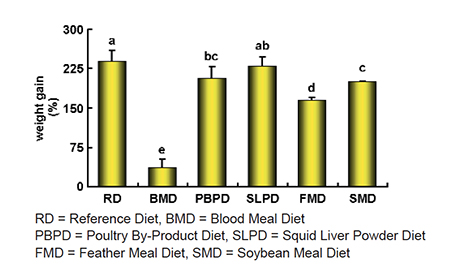
A six-week feeding trial was conducted to evaluate the effects of five dietary protein sources on growth performance and phosphorus-retention efficiency in olive flounders. Five test ingredients were evaluated: blood meal, poultry byproduct, squid liver powder, feather meal, and soybean meal. Experimental diets were prepared by mixing a reference diet based on fishmeal with one of the test ingredients at a 7:3 ratio.
There was no significant difference in weight gain, feed efficiency, specific growth rate, protein efficiency ratio, or phosphorus-retention efficiency of bone among fish fed the squid liver powder diet and the reference diet. Phosphorus retention efficiency of whole body of fish fed squid liver powder diet was significantly higher than those of fish fed the other diets.
The weight gain of fish fed the poultry byproduct diet was significantly lower than that of fish fed the reference diet, but there was no significant difference in weight gain between fish fed the poultry byproduct and squid liver powder diets. Whole-body phosphorus retention efficiency of fish fed poultry byproducts was significantly lower than those of fish fed squid liver powder, but there was no significant difference in feed efficiency, specific growth rate, protein efficiency ratio, or phosphorus-retention efficiency between fish fed the poultry byproduct and reference diets.
These results indicate that squid liver powder could be an excellent protein source to develop low-pollution diets without affecting growth, feed efficiency, and normal health condition in olive flounder. Poultry byproducts could also be a protein source to develop low-pollution diets for this species (Fig. 3).
Phosphorus requirement trial
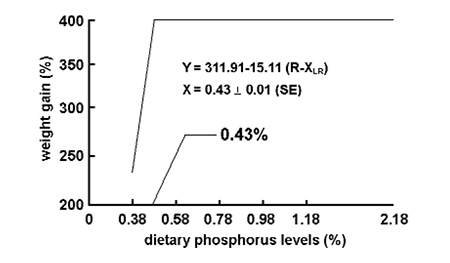
An eight-week feeding trial was conducted to determine the dietary phosphorus requirement of juvenile olive flounders reared in the recirculating system. Three replicate groups of fish were fed semi-purified diets containing graded levels of monosodium phosphate to provide 0.38, 0.58, 0.78, 0.98, 1.18, or 2.18 percent total phosphorus in the basal diets.
Fish fed the 0.58 percent total phosphorus diet had a significantly higher weight gain and specific growth rate than did fish fed the other diets. There was no increase in weight gain, feed eficiency, and specific growth rate as the levels of total phosphorus increased above 0.58 percent of diet. Bone ash and phosphorus were increased by the levels of total phosphorus. Broken-line model analyses for the dietary phosphorus requirement was 0.43 percent for weight gain and feed efficiency, respectively. These results indicate the dietary phosphorus requirement for olive flounder could be 0.43 percent (Fig. 4).
Conclusion
The most important challenge facing the aquaculture industry today is to ensure long-term sustainability, and environmentally sound production technologies must be further developed. Development of low-pollution, high-quality fish feeds is one of the most important needs, because diet costs typically represent 40 to 70 percent of the variable costs in aquaculture operations. To develop these diets, the control of dietary phosphorus and nitrogen is essential to reduce feed waste without affecting production.
Cited references are available from the author.
(Editor’s Note: This article was originally published in the April 2001 print edition of the Global Aquaculture Advocate.)
Now that you've reached the end of the article ...
… please consider supporting GSA’s mission to advance responsible seafood practices through education, advocacy and third-party assurances. The Advocate aims to document the evolution of responsible seafood practices and share the expansive knowledge of our vast network of contributors.
By becoming a Global Seafood Alliance member, you’re ensuring that all of the pre-competitive work we do through member benefits, resources and events can continue. Individual membership costs just $50 a year.
Not a GSA member? Join us.
Author
-
Sungchul C. Bai, Ph.D.
Director
Department of Aquaculture/Feeds & Foods Nutrition Research Center
Pukyong National University
Pusan, Korea
Related Posts
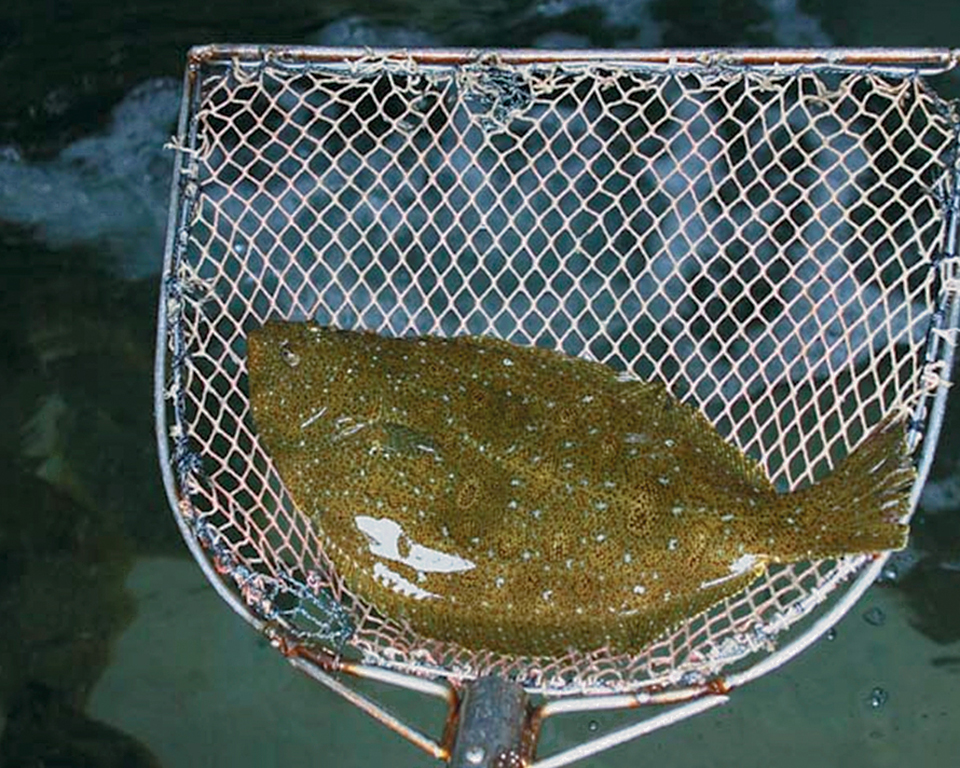
Health & Welfare
Dietary organic acids improve gut health, disease resistance in olive flounder
A study evaluated the effects of two organic acid blends on performance, gut health and disease resistance in olive flounder. The dietary organic acids were effective in lowering total gut bacterial counts, gut Vibrio counts and in conferring resistance against Edwardsiella tarda.
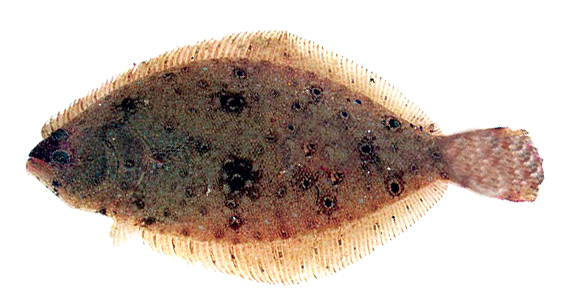
Health & Welfare
Olive flounder culture in South Korea
The Republic of Korea is by far the top global producer of olive flounder raised mainly in flow-through systems at land-based facilities on the coast.
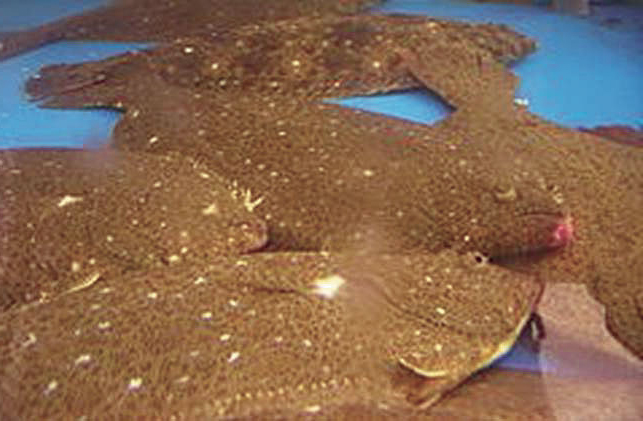
Health & Welfare
Korean researchers study protein levels, P:E ratios in olive flounder diets
The authors conducted research to determine the optimum dietary protein levels and protein:energy ratios for different age groups of olive flounders.
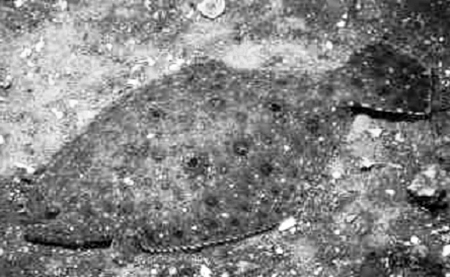
Health & Welfare
Dietary protein level and protein/energy ratios for optimum growth of olive flounders
Olive flounders fed a diet containing 45 percent crude protein at 4,000 kcal/kg appeared to utilize feed more efficiently than fish fed the other diets.



